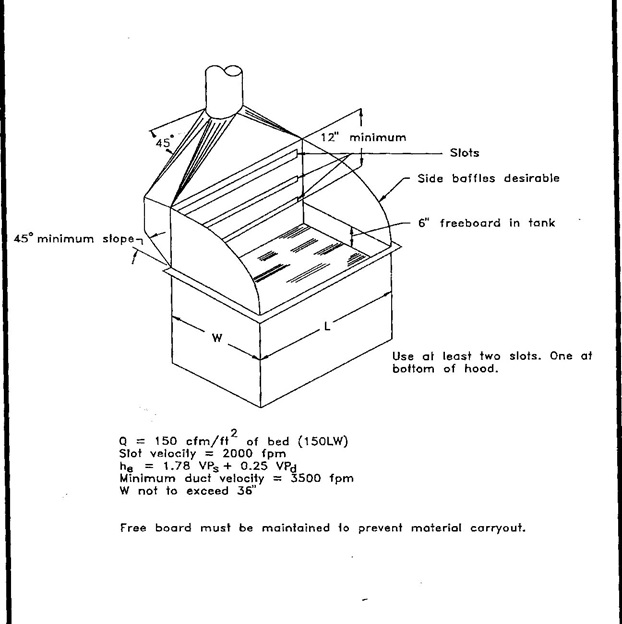Engineering Controls Database
Insect Rearing Facilities – Control Observations and Recommendations
|
The Animal and Plant Health Inspection Service (APHIS) of the Department of Agriculture helps safeguards agriculture and natural resources from the entry, establishment, and spread of animal and plant pests and noxious weeds into the United States. One of the methods used by APHIS to help eradicate insects is to raise the insects in facilities for release of sterilized insects into the environment. In early 1993, the Engineering Control Technology Branch of the Division of Physical Sciences and Engineering (DPSE) was asked to assist in an Occupational Asthma Identification project being carried out by the Clinical Investigations Branch of the Division of Respiratory Disease Studies (DRDS) by evaluating engineering controls used in insect rearing facilities. Industrial hygiene evaluations of three insect rearing facilities operated by APHIS were conducted. Observations were made at the Pink Boll Worm Rearing Facility in Phoenix, Arizona, August 22-26, 1993; the Mexican Fruit Fly Rearing Facility in Edinburg, Texas, August 28-30, 1993; and the Gypsy Moth Rearing Group at Otis Air National Guard Base, Massachusetts, November 1-4, 1993. |
|
| At the time of these surveys, suspected asthma was found in some workers, but the cause of the disease was unknown. It was assumed that insect parts might be a major factor; however, the specific antigens and dose were not established. Thus, there was no guidance as to the sources of hazardous emissions or to what chemicals or substances needed to be controlled. Limited resources precluded a comprehensive study of the ventilation and other control systems. Therefore, the controls evaluated in this study were limited to those operations incidental to the industrial hygiene study which was carried out at each facility. | |
|
The industrial hygiene evaluations considered the following areas: Pink Boll Worm Rearing • Packaging • Egg Stacking and Tray Washing • Egg Preparation • Pupae Stripping • Emergence Mexican Fruit Fly Rearing Facility • Pupae Dyeing • Radiation • Screening • Diet Preparation Gypsy Moth Rearing Group • Quarantine • Quality Control • Egg Counting • Diet preparation • Tray Washing Specific control recommendations were made for each area evaluated. These controls were based on reducing potential worker exposure to dusts that may contain insect parts. The recommendations generally specified ventilation controls that could be used to reduce dusts (e.g. local exhaust hoods). Illustrations of hoods similar to those provided in American Conference of Governmental Industrial Hygienists (ACGIH) industrial ventilation guidelines were included. Figure 1 is an example of an illustration included in the recommendations for packaging in the cold room for pink boll worm rearing. As appropriate, the use of HEPA filtered vacuum cleaners was also recommended.  |
|
| 010-01A; | |
|
asthma asthma dust dust insect rearing facilities insect rearing facilities |
